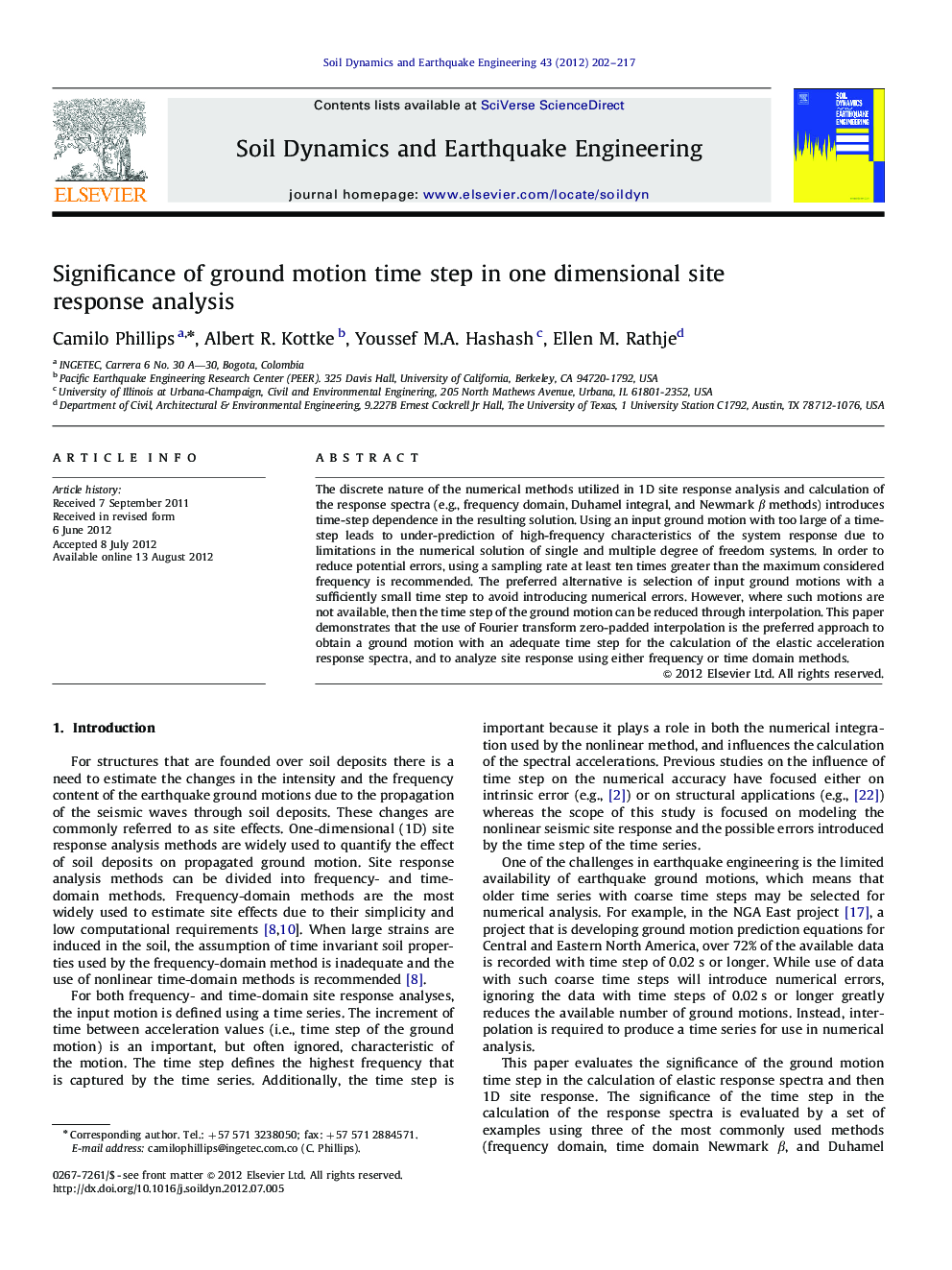| Article ID | Journal | Published Year | Pages | File Type |
|---|---|---|---|---|
| 304426 | Soil Dynamics and Earthquake Engineering | 2012 | 16 Pages |
The discrete nature of the numerical methods utilized in 1D site response analysis and calculation of the response spectra (e.g., frequency domain, Duhamel integral, and Newmark β methods) introduces time-step dependence in the resulting solution. Using an input ground motion with too large of a time-step leads to under-prediction of high-frequency characteristics of the system response due to limitations in the numerical solution of single and multiple degree of freedom systems. In order to reduce potential errors, using a sampling rate at least ten times greater than the maximum considered frequency is recommended. The preferred alternative is selection of input ground motions with a sufficiently small time step to avoid introducing numerical errors. However, where such motions are not available, then the time step of the ground motion can be reduced through interpolation. This paper demonstrates that the use of Fourier transform zero-padded interpolation is the preferred approach to obtain a ground motion with an adequate time step for the calculation of the elastic acceleration response spectra, and to analyze site response using either frequency or time domain methods.
► Sampling rate at least ten times greater than the maximum considered frequency is recommended. ► Select input ground motions with a sufficiently small Δt to avoid introducing numerical errors. ► If no such motions, the Δt of the ground motion can be reduced through interpolation. ► Fourier transform zero-padded interpolation is the preferred interpolation scheme.
